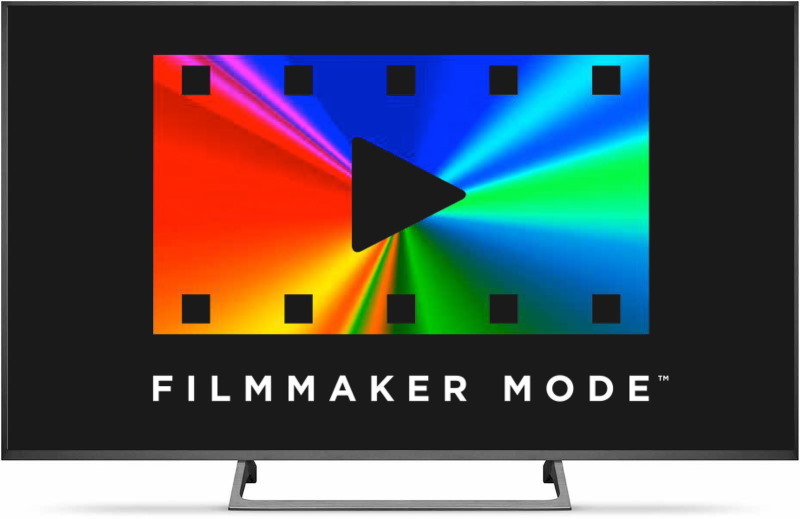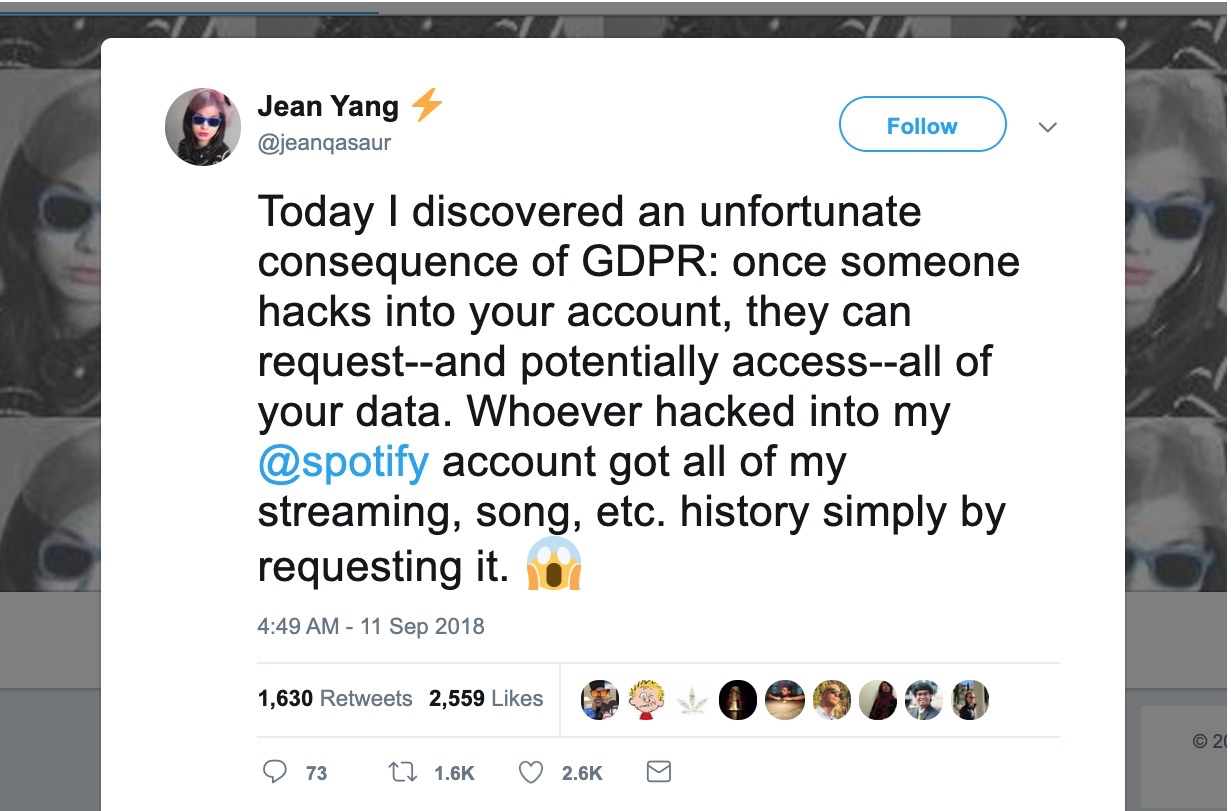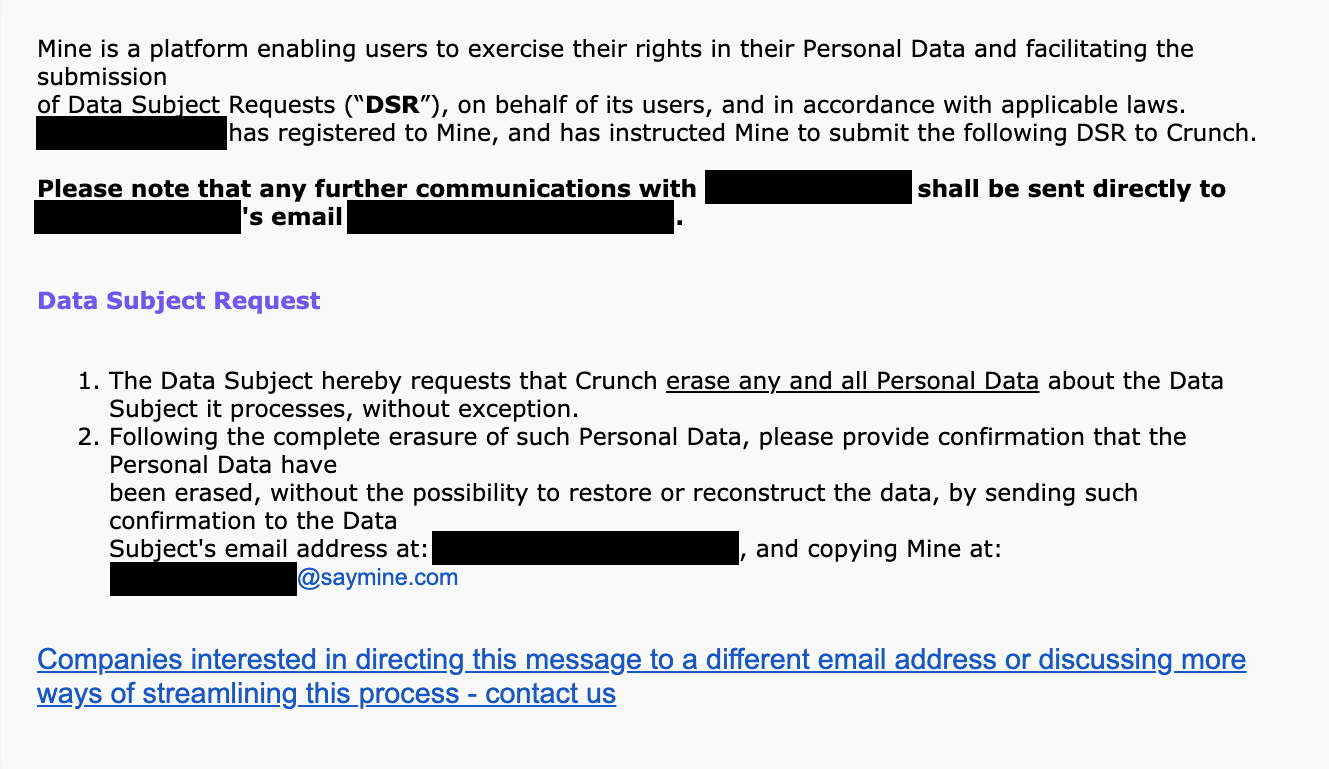
|
|
from How-To Geek https://ift.tt/38cygjx

|
|

![]() Wall Street Journal:
Wall Street Journal:
Chainalysis: cryptocurrency scams involving Ponzi schemes and other frauds took in over $4B in 2019, which was more than the combined $3B haul in 2017 and 2018 — Ponzi schemes are the latest form of bitcoin fraud, with big platforms like one called PlusToken drawing the most money

![]() Kyle Wiggers / VentureBeat:
Kyle Wiggers / VentureBeat:
Cherre, which is using AI to index and analyze real estate data from disparate public and private sources, raises $16M Series A led by Intel Capital — Real estate data collection and analytics costs can total in the millions of dollars. That's why in 2016, L.D. Salmanson founded Cherre …

![]() Benzinga:
Benzinga:
ClearMetal, which uses data analytics to optimize logistics and supply chain operations, raises a $15M round, bringing its total raised to more than $31M — San Francisco-based logistics data analytics startup ClearMetal announced it has raised $15 million in a fresh round of funding led …

![]() Kyle Wiggers / VentureBeat:
Kyle Wiggers / VentureBeat:
Automox raises $30M Series B for developing a platform to automate configuration, patching, management, and inventory of enterprise endpoints — The average cost of a data breach is nearly $4 million, and yet 74% of companies say they can't patch vulnerabilities quickly enough because they lack the necessary staff.

![]() Patricia Nilsson / Financial Times:
Patricia Nilsson / Financial Times:
LexisNexis Risk Solutions, part of RELX, agrees to buy Arizona-based Emailage, which uses machine learning to help clients detect fraud; source says for ~$480M — Relx is to buy Arizona-based Emailage for about $480m, as the UK-listed information and analytic group deepens its push into the fraud prevention sector.

![]() Alaric DeArment / MedCity News:
Alaric DeArment / MedCity News:
Vineti, a company that makes software for cell and gene therapy firms, raises $35M Series C, led by Cardinal Health, with participation from Novartis and others — The company said it plans to expand into new supply chains for advanced therapeutics in addition to cell and gene therapies …

![]() Josh Constine / TechCrunch:
Josh Constine / TechCrunch:
How Hoop, an app for making Snapchat friends, hit #2 in the App Store with a virality and monetization strategy making users spend in-app currency to reach out — Snapchat's developer platform is blowing up as a gateway to teen social app users. Hoop is the latest Snap Kit blockbuster …
As founding executive director of Tech:NYC, Julie Samuels is one of the state’s most prominent advocates for the tech sector, both in Albany and at City Hall.
Samuels, a lawyer by training, came to New York after serving as executive director of Engine, a San Francisco organization on which Tech:NYC is modeled. In an interview with TechCrunch, Samuels spoke about several issues, including her rationale for why, despite the controversy over Amazon’s decision not to build its second headquarters in Queens, the area is well-positioned for the next wave of tech innovation.
TechCrunch: What is the need for organizations like Tech:NYC and Engine?
Julie Samuels: As the tech industry matures, it is incredibly important that there are organizations [that] represent these companies politically, civically, making sure they have a seat at the table with so many public policy debates. There is no shortage of public policy debates surrounding technology.
It is also incredibly important that there are organizations who are talking from the viewpoint of smaller companies and startups. There are a lot of organizations that represent the biggest and most well-known companies, including Tech:NYC. But [we] also have hundreds of members who are small and growing startups. We think that diversity of the ecosystem is what really sets the technology sector apart and it is something we want to foster and celebrate.
Who are your members, then?

Hunting for a job? You’ll need to stay prepared for interviews conducted over both voice and video calls. These are quite common as a precursor to, and sometimes a replacement for, a face-to-face interview.
Phone-based interviews can be just as nerve-wracking as in-person interviews. So, do the same rules apply to both? Yes and no. You’ll find a few areas of overlap, but phone interviews also come with a few unique advantages and challenges.
The good news is that if you’re gearing up for a voice- or video-based interview, the cheat sheet below can help you prepare well for it.
The cheat sheet covers the prep work involved, common questions you can expect, and other essentials you need to know about for a successful interview.
FREE DOWNLOAD: This cheat sheet is available as a downloadable PDF from our distribution partner, TradePub. You will have to complete a short form to access it for the first time only. Download Phone Interview Essentials.
| Tips |
|---|
| Advantages of a Phone Interview |
| ■ You can participate from the comfort of your home or from anywhere else in the world. |
| ■ You can schedule the interview in advance and this flexibility can win you extra points. |
| ■ You can give more descriptive answers. |
| ■ You can cover up gaps in your resume by explaining the reasons behind them. |
| ■ You can showcase your verbal communication skills if body language is an issue. |
| ■ You can have relevant facts and figures handy and refer to them while giving the interview. |
| Pre-Interview Prep: Do Your Research |
| ■ Record a professional voicemail message as soon as you submit your resumes as calls can come at the worst possible times. |
| ■ Make a list of your strengths and weaknesses. |
| ■ Review the job advertisement and match your skills to the requirements asked for. |
| ■ Research key facts about the company and the projects they are involved in. For e.g., place in the industry, future outlook, news/press, product, culture. |
| ■ List examples and projects you can use to demonstrate how you fit the profile. |
| ■ Print and organize this information alphabetically for each position you have applied for. |
| ■ Prepare answers to common questions the interviewer may ask. |
| ■ Write your elevator pitch: what you have done in the past, what you are doing now, and what you would like to be doing in the future. |
| ■ Keep your CV and an alphabetized dossier of companies you have applied to next to your phone or computer. |
| ■ Learn more about your interviewer so you can put a face and personality behind the voice. |
| ■ Prepare your answers to commonly asked interview questions and visualize your response in detail. (Refer to the last section of this PDF for a few interview questions you can expect.) |
| Pre-Interview Prep: Set Your Environment |
| ■ Find a quiet room that allows you to give an interview without any disturbances. |
| ■ Optimize the room temperature and light so you can be comfortable during the interview. |
| ■ Find a comfortable chair and desk to use. |
| ■ Inform your family ahead of time about the interview to ensure no one interrupts you. |
| ■ Drink plenty of water and keep more close by. |
| ■ Switch off all push notifications on your phone. |
| ■ Charge your phone and keep your charger handy. |
| ■ Use a good set of noise-cancelling headphones. |
| ■ Have a pen and paper available to take notes and a calendar to schedule any follow-up interviews. |
| ■ Dress professionally for the interview. |
| ■ Visualize any obstacles or interruptions (for e.g., call drops) and your ideal response to manage them. |
| ■ Rehearse a simulated interview with someone and practice answers. |
| The Interview |
| ■ Mind your posture and avoid slouching. |
| ■ Do not eat, drink, or smoke during the interview. |
| ■ Beware of sounding overfamiliar. Refer to the other person by their surname unless told to do otherwise. |
| ■ Do not interrupt the interviewer. |
| ■ Let the interviewer do most of the talking. |
| ■ When it is your turn, be brief and factual. |
| ■ Avoid "Yes" and "No" answers. Elaborate on your skill sets and experiences. |
| ■ Do not hem and haw while answering as it indicates indecisiveness. |
| ■ Sound enthusiastic with your answers. |
| ■ Pause, think, and give your answers clearly. |
| ■ Avoid clichéd responses. |
| ■ Be honest about any unexpected distractions. |
| ■ Take quick notes or record the conversation so you can refer to it later for the face-to-face interview, if there’s one. |
| ■ Once the interview concludes, ask what the next step will be in the process. |
| ■ Seek permission to follow up for information or queries. |
| ■ Ensure that you have the right contact details and the correct spelling and pronunciation of the interviewer's name. |
| The Follow-Up |
| ■ Ask when and how you can follow up. |
| ■ When you don't hear back, it's ideal to send an email a week after the phone interview. |
| ■ Send a thank-you email. |
| Common Questions to Prep For |
| ■ Can you tell me a little about yourself? |
| ■ Can you walk me through your life? |
| ■ Why do you want this job? |
| ■ Why do you want to work at this company? |
| ■ What do you know about our company/and the position you are applying for? |
| ■ Why did you leave (or are leaving) your last position? |
| ■ Tell us about your current job role. |
| ■ Are you willing to relocate or travel? |
| ■ What applicable experiences or skills do you have? |
| ■ Why do you think you are the best person for the job? |
| ■ Why is there a work gap in your resume? (If there is...) |
| ■ What is your greatest weakness? |
| ■ What are some of your greatest strengths? |
| ■ What are your career goals? |
| ■ Tell me about a successful project you have completed. |
| ■ How do you handle difficult situations? Give us an example. |
| ■ What are your salary expectations? |
| ■ When can you start with us? |
| ■ Do you have any questions for us? |
Looking for more resources to help you land your next gig? Explore these mock interview websites and these sites that can help you impress potential employers. Also, pay attention to these essential job interview tips.
Read the full article: The Phone Interview Cheat Sheet: Tips for Success

If you’re looking for an ebook that covers all the fundamental techniques to master Microsoft Excel, this is it.
This newly updated edition of Excel For Dummies will teach you how to create, edit, format, and print your own worksheets. You’ll then progress to charting, creating data lists, and even performing data analysis.
By improving your knowledge of how to use Excel, you’ll build the toolkit to become more effective at everything from financial reporting and project management, to data analysis and forecasting.
Each chapter in the book stands alone, meaning you can dive into the relevant section whenever you need guidance with your own projects. These sections will explain what each feature is good for, and how to most efficiently use these features to get the results you require.
By working your way through this ebook, you will:
Want to download your free copy? Simply click here to download Excel For Dummies 2019 from TradePub. You will have to complete a short form to access the ebook, but it’s well worth it!
Note: this free offer expires 18 Feb 2020.
Read the full article: Download Excel For Dummies 2019 For FREE (Worth $30!)

![]() Peter Blumberg / Bloomberg:
Peter Blumberg / Bloomberg:
Facebook agrees to improve its security procedures to settle a class action lawsuit over the 2018 data breach that exposed personal data of 29M users — Facebook Inc. pledged to improve security protocols to resolve a lawsuit blaming the company for a 2018 data breach that exposed personal data of 29 million users.
TVs this year will ship with a new feature called “filmmaker mode,” but unlike the last dozen things the display industry has tried to foist on consumers, this one actually matters. It doesn’t magically turn your living room into a movie theater, but it’s an important step in that direction.
This new setting arose out of concerns among filmmakers (hence the name) that users were getting a sub-par viewing experience of the media that creators had so painstakingly composed.
The average TV these days is actually quite a quality piece of kit compared to a few years back. But few ever leave their default settings. This was beginning to be a problem, explained LG’s director of special projects, Neil Robinson, who helped define the filmmaker mode specification and execute it on the company’s displays.
“When people take TVs out of the box, they play with the settings for maybe five minutes, if you’re lucky,” he said. “So filmmakers wanted a way to drive awareness that you should have the settings configured in this particular way.”
In the past they’ve taken to social media and other platforms to mention this sort of thing, but it’s hard to say how effective a call to action is, even when it’s Tom Cruise and Chris McQuarrie begging you:
I’m taking a quick break from filming to tell you the best way to watch Mission: Impossible Fallout (or any movie you love) at home. pic.twitter.com/oW2eTm1IUA
— Tom Cruise (@TomCruise) December 4, 2018
While very few people really need to tweak the gamma or adjust individual color levels, there are a couple settings that are absolutely crucial for a film or show to look the way it’s intended. The most important are ones that fit under the general term “motion processing.”
These settings have a variety of fancy-sounding names, like “game mode,” “motion smoothing,” “truemotion,” and such like, and they are on by default on many TVs. What they do differs from model to model, but it amounts to taking content at, say, 24 frames per second, and converting it to content at, say, 120 frames per second.
Generally this means inventing the images that come between the 24 actual frames — so if a person’s hand is at point A in one frame of a movie and point C in the next, motion processing will create a point B to go in between — or B, X, Y, Z, and dozens more if necessary.
This is bad for several reasons:
First, it produces a smoothness of motion that lies somewhere between real life and film, giving an uncanny look to motion-processed imagery that people often say reminds them of bad daytime TV shot on video — which is why people call it the “soap opera effect.”
Second, some of these algorithms are better than others, and some media is more compatible than the rest (sports broadcasts, for instance). While at best they produce the soap opera effect, at worst they can produce weird visual artifacts that can distract even the least sensitive viewer.
And third, it’s an aesthetic affront to the creators of the content, who usually crafted it very deliberately, choosing this shot, this frame rate, this shutter speed, this take, this movement, and so on with purpose and a careful eye. It’s one thing if your TV has the colors a little too warm or the shadows overbright — quite another to create new frames entirely with dubious effect.
So filmmakers, and in particular cinematographers, whose work crafting the look of the movie is most affected by these settings, began petitioning TV companies to either turn motion processing off by default or create some kind of easily accessible method for users to disable it themselves.

Ironically, the option already existed on some displays. “Many manufacturers already had something like this,” said Robinson. But with different names, different locations within the settings, and different exact effects, no user could really be sure what these various modes actually did. LG’s was “Technicolor Expert Mode.” Does that sound like something the average consumer would be inclined to turn on? I like messing with settings, and I’d probably keep away from it.
So the movement was more about standardization than reinvention. With a single name, icon, and prominent placement instead of being buried in a sub-menu somewhere, this is something people may actually see and use.
Not that there was no back-and-forth on the specification itself. For one thing, filmmaker mode also lowers the peak brightness of the TV to a relatively dark 100 nits — at a time when high brightness, daylight visibility, and contrast ratio are specs manufacturers want to show off.
The reason for this is, very simply, to make people turn off the lights.
There’s very little anyone in the production of a movie can do to control your living room setup or how you actually watch the film. But restricting your TV to certain levels of brightness does have the effect of making people want to dim the lights and sit right in front. Do you want to watch movies in broad daylight, with the shadows pumped up so bright they look grey? Feel free, but don’t imagine that’s what the creators consider ideal conditions.

Photo: Chris Ryan / Getty Images
“As long as you view in a room that’s not overly bright, I’d say you’re getting very close to what the filmmakers saw in grading,” said Robinson. Filmmaker mode’s color controls are a rather loose, he noted, but you’ll get the correct aspect ratio, white balance, no motion processing, and generally no weird surprises from not delving deep enough in the settings.
The full list of changes can be summarized as follows:
All this, however, relies on people being aware of the mode and choosing to switch to it. Exactly how that will work depends on several factors. The ideal option is probably a filmmaker mode button right on the clicker, which is at least theoretically the plan.
The alternative is a content specification — as opposed to a display one — that allows TVs to automatically enter filmmaker mode when a piece of media requests it to. But this requires content providers to take advantage of the APIs that make the automatic switching possible, so don’t count on it.
And of course this has its own difficulties, including privacy concerns — do you really want your shows to tell your devices what to do and when? So a middle road where the TV prompts the user to “Show this content in filmmaker mode? Yes/No” and automatic fallback to the previous settings afterwards might be the best option.
There are other improvements that can be pursued to make home viewing more like the theater, but as Robinson pointed out, there are simply fundamental differences between LCD and OLED displays and the projectors used in theaters — and even then there are major differences between projectors. But that’s a whole other story.
At the very least, the mode as planned represents a wedge that content purists (it has a whiff of derogation but they may embrace the term) can widen over time. Getting the average user to turn off motion processing is the first and perhaps most important step — everything after that is incremental improvement.
So which TVs will have filmmaker mode? It’s unclear. LG, Vizio, and Panasonic have all committed to bringing models out with the feature, and it’s even possible it could be added to older models with a software update (but don’t count on it). Sony is a holdout for now. No one is sure exactly which models will have filmmaker mode available, so just cast an eye over the spec list of you’re thinking of getting and, if you’ll take my advice, don’t buy a TV without it.
California’s new privacy law was years in the making.
The law, California’s Consumer Privacy Act — or CCPA — became law on January 1, allowing state residents to reclaim their right to access and control their personal data. Inspired by Europe’s GDPR, the CCPA is the largest statewide privacy law change in a generation. The new law lets users request a copy of the data that tech companies have on them, delete the data when they no longer want a company to have it, and demand that their data isn’t sold to third parties. All of this is much to the chagrin of the tech giants, some of which had spent millions to comply with the law and have many more millions set aside to deal with the anticipated influx of consumer data access requests.
But to say things are going well is a stretch.
Many of the tech giants that kicked and screamed in resistance to the new law have acquiesced and accepted their fate — at least until something different comes along. The California tech scene had more than a year to prepare, but some have made it downright difficult and — ironically — more invasive in some cases for users to exercise their rights, largely because every company has a different interpretation of what compliance should look like.
Alex Davis is just one California resident who tried to use his new rights under the law to make a request to delete his data. He vented his annoyance on Twitter, saying companies have responded to CCPA by making requests “as confusing and difficult as possible in new and worse ways.”
“I’ve never seen such deliberate attempts to confuse with design,” he told TechCrunch. He referred to what he described as “dark patterns,” a type of user interface design that tries to trick users into making certain choices, often against their best interests.
“I tried to make a deletion request but it bogged me down with menus that kept redirecting… things to be turned on and off,” he said.
Despite his frustration, Davis got further than others. Just as some companies have made it easy for users to opt-out of having their data sold by adding the legally required “Do not sell my info” links on their websites, many have not. Some have made it near-impossible to find these “data portals,” which companies set up so users can request a copy of their data or delete it altogether. For now, California companies are still in a grace period — but have until July when the CCPA’s enforcement provisions kick in. Until then, users are finding ways around it — by collating and sharing links to data portals to help others access their data.
“We really see a mixed story on the level of CCPA response right now,” said Jay Cline, who heads up consulting giant PwC’s data privacy practice, describing it as a patchwork of compliance.
PwC’s own data found that only 40% of the largest 600 U.S. companies had a data portal. Only a fraction, Cline said, extended their portals to users outside of California, even though other states are gearing up to push similar laws to the CCPA.
But not all data portals are created equally. Given how much data companies store on us — personal or otherwise — the risks of getting things wrong are greater than ever. Tech companies are still struggling to figure out the best way to verify each data request to access or delete a user’s data without inadvertently giving it away to the wrong person.
Last year, security researcher James Pavur impersonated his fiancee and tricked tech companies into turning over vast amounts of data about her, including credit card information, account logins and passwords and, in one case, a criminal background check. Only a few of the companies asked for verification. Two years ago, Akita founder Jean Yang described someone hacking into her Spotify account and requesting her account data as an “unfortunate consequence” of GDPR, which mandated companies operating on the continent allow users access to their data.

(Image: Twitter/@jeanqasaur)
The CCPA says companies should verify a person’s identity to a “reasonable degree of certainty.” For some that’s just an email address to send the data.
Others require sending in even more sensitive information just to prove it’s them.
Indeed, i360, a little-known advertising and data company, until recently asked California residents for a person’s full Social Security number. This recently changed to just the last four-digits. Verizon (which owns TechCrunch) wants its customers and users to upload their driver’s license or state ID to verify their identity. Comcast asks for the same, but goes the extra step by asking for a selfie before it will turn over any of a customer’s data.
Comcast asks for the same amount of information to verify a data request as the controversial facial recognition startup, Clearview AI, which recently made headlines for creating a surveillance system made up of billions of images scraped from Facebook, Twitter and YouTube to help law enforcement trace a person’s movements.
As much as CCPA has caused difficulties, it has helped forge an entirely new class of compliance startups ready to help large and small companies alike handle the regulatory burdens to which they are subject. Several startups in the space are taking advantage of the $55 billion expected to be spent on CCPA compliance in the next year — like Segment, which gives customers a consolidated view of the data they store; Osano which helps companies comply with CCPA; and Securiti, which just raised $50 million to help expand its CCPA offering. With CCPA and GDPR under their belts, their services are designed to scale to accommodate new state or federal laws as they come in.
Another startup, Mine, which lets users “take ownership” of their data by acting as a broker to allow users to easily make requests under CCPA and GDPR, had a somewhat bumpy debut.
The service asks users to grant them access to a user’s inbox, scanning for email subject lines that contain company names and using that data to determine which companies a user can request their data from or have their data deleted. (The service requests access to a user’s Gmail but the company claims it will “never read” users’ emails.) Last month during a publicity push, Mine inadvertently copied a couple of emailed data requests to TechCrunch, allowing us to see the names and email addresses of two requesters who wanted Crunch, a popular gym chain with a similar name, to delete their data.

(Screenshot: Zack Whittaker/TechCrunch)
TechCrunch alerted Mine — and the two requesters — to the security lapse.
“This was a mix-up on our part where the engine that finds companies’ data protection offices’ addresses identified the wrong email address,” said Gal Ringel, co-founder and chief executive at Mine. “This issue was not reported during our testing phase and we’ve immediately fixed it.”
For now, many startups have caught a break.
The smaller, early-stage startups that don’t yet make $25 million in annual revenue or store the personal data on more than 50,000 users or devices will largely escape having to immediately comply with CCPA. But it doesn’t mean startups can be complacent. As early-stage companies grow, so will their legal responsibilities.
“For those who did launch these portals and offer rights to all Americans, they are in the best position to be ready for these additional states,” said Cline. “Smaller companies in some ways have an advantage for compliance if their products or services are commodities, because they can build in these controls right from the beginning,” he said.
CCPA may have gotten off to a bumpy start, but time will tell if things get easier. Just this week, California’s attorney general Xavier Becerra released newly updated guidance aimed at trying to “fine tune” the rules, per his spokesperson. It goes to show that even California’s lawmakers are still trying to get the balance right.
But with the looming threat of hefty fines just months away, time is running out for the non-compliant.
Welcome back to This Week in Apps, the Extra Crunch series that recaps the latest OS news, the applications they support and the money that flows through it all.
The app industry is as hot as ever with a record 204 billion downloads in 2019 and $120 billion in consumer spending in 2019, according to App Annie’s recently released “State of Mobile” annual report. People are now spending 3 hours and 40 minutes per day using apps, rivaling TV. Apps aren’t just a way to pass idle hours — they’re a big business. In 2019, mobile-first companies had a combined $544 billion valuation, 6.5x higher than those without a mobile focus.
In this Extra Crunch series, we help you keep up with the latest news from the world of apps, delivered on a weekly basis.
This week, we look at the app making headlines for causing a disaster in Iowa, TikTok’s power to move apps up the charts, all the news from Apple’s new betas, the plan from Chinese mobile giants to take on Google Play, subscription scams, plus app trends and other news.
A smartphone app really screwed things up in Iowa. The app, built by Shadow Inc., was designed to help the Iowa Democratic Party tabulate votes from the caucuses. But instead of helping, the app failed, causing a massive delay of almost an entire day. According to The New York Times, the app was quickly put together in just the past two months — and wasn’t properly tested.

![]() Sean Gallagher / Ars Technica:
Sean Gallagher / Ars Technica:
Some ransomware rings have started stealing data before they encrypt to use stolen data as leverage, ensuring that even victims with backups make the payment — Ransomware operators stealing data before they encrypt means backups are not enough. — Not every ransomware attack is an unmitigated disaster.